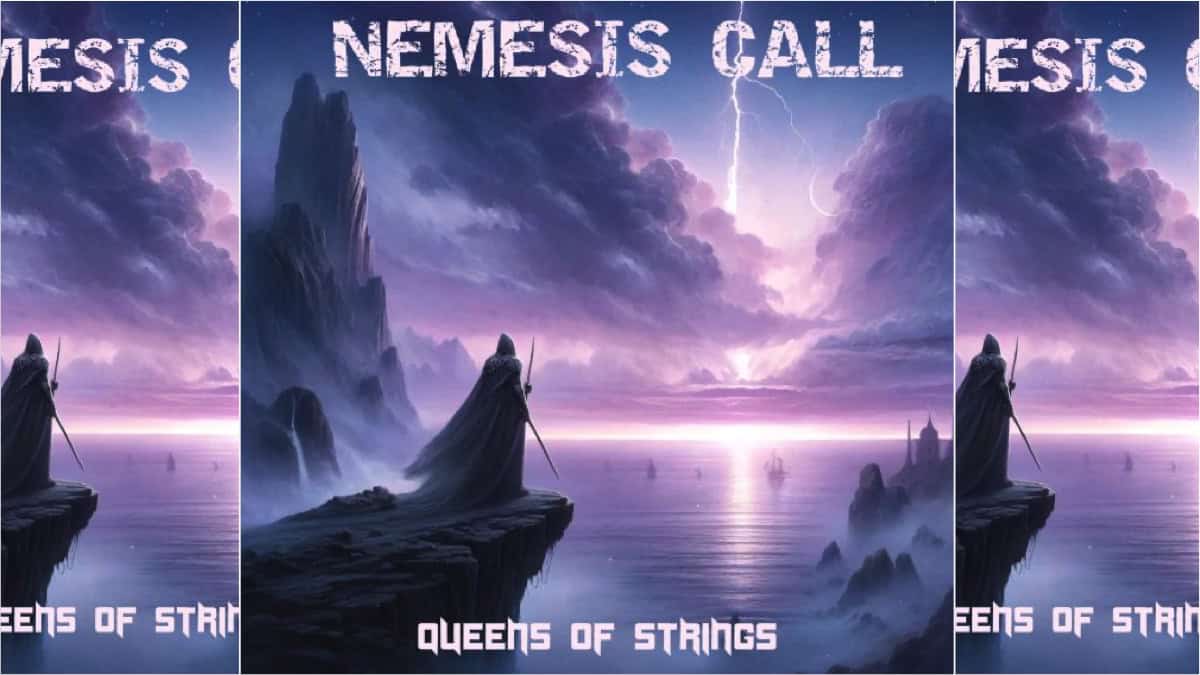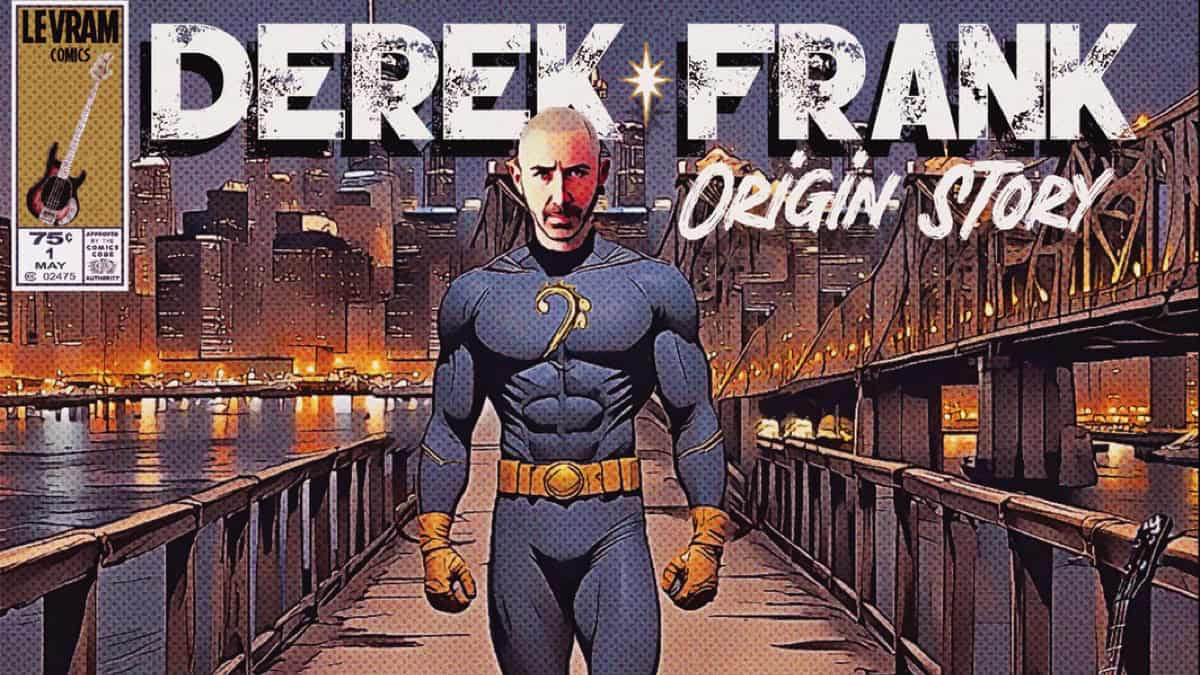Latest
Ahmad Jamal’s Album: At the Pershing But Not For Me

This month’s transcription is Israel Crosby’s bass line from Poinciana off Ahmad Jamal’s album: At the Pershing But Not For Me. Before reading through the piece, take a listen to the track. The lesson to take home from this recording is the use of themes and arranging techniques within a jazz bass line. Listen for the themes in the track and take note of how often it switches to a new theme. Listening once before you play will give you a better idea on when a theme is temporarily interrupted, or when the theme actually changes. At first glance at the notation, it could seem like there are too many changes in themes, or that repeating one theme too often will make the song boring, but listening to the track once before playing it will answer all those questions.
It’s important to keep in mind that Israel Crosby is a heavy cat. If you listen to the rest of the album, you will find that he can play incredibly melodic and interesting walking lines even during blazing tempos. He is capable of walking through a song without having the same idea happen twice. If he wanted to, he could play devoid of all themes or motifs. Remember that a lot of thought went into this song before it was performed, and Israel specifically thought this bass line was best.
Poinciana is filled with extremely strong motifs, not only in bass but in all the instruments. Imagine for a moment what the song might sound like without such distinct and specialized parts. Imagine a standard jazz drum groove and a walking line where no two measures are the same. The tune would definitely lose most of its flavor and appeal. When listening or working on a tune, ask yourself how often the audience could sing parts from the piece once the song is over. How much should they be able to sing? Some melodies can be very corny, but the fact that it can be buzzing in our heads long enough for us to be able to sing them later, proves that we were able to identify with it on some level. Isn’t that what music is all about?
Onto the analysis. When I analyze a piece, I want to find out why the bass player chose his or her approach. This piece has the most thematic bass line of any other jazz song I have ever heard. It’s not like some tunes where the bass line plays the exact same pattern for the entire tune. I am a fan of that too, but that’s a different approach than what we’re seeing here. This tune has at least 16 different themes. That’s a ton for a single song. A theme gives the listener something that they can hold onto and identify with. An audience needs to have something to identify with from a song or they will lose interest. This is why some jazz tunes appeal only to jazz musicians. It means that the only identifiable elements are elements that can only be recognized if you have studied jazz. The only other reason people might appear to identify with such a tune is when they pretend to appreciate it in order to look hip. It’s funny, but true.
Now that we know that themes were very important to either Ahmad or Israel (most likely both), and that the idea of using such strong themes was clearly intentional, let’s take a look at when the themes change and why. Take a look through the sheet music and circle the theme (usually one measure long) and note how long it takes before the theme stops repeating. Remember that a fill or slight variation doesn’t mean the theme has been abandoned unless the change keeps repeating. A good example of this difference is measures 59-66. Measure 59 is the theme. You’ll notice that 61-62, and 65-66 depart from this theme, but a new theme doesn’t start until measure 67. It’s basically a call and response. The main theme at measures 59-60 and 63-64 are the call, and the parts that occur in the opposite measures are the responses.
When I went through the song, I circled each measure that introduced a theme and assigned it a letter. This helped me to see where the same theme reoccurs and identify it quickly later on. After you mark the themes, make a note about how long each theme repeats. Once you are done, your analysis will tell you how often themes reoccur, how many themes exist total, and any trends in how long themes repeat. I personally want to learn about what Israel and Ahmad think are the strongest musical choices, and I analyze a tune to try to find this information.
16 major themes occur in this tune. Each theme is a measure long, and they are introduced at these measures: 1, 17, 27, 43, 59, 67, 75, 91, 99, 107, 115, 123, 139, 147, 155, and 163. Most themes last only 8 measures. The exceptions to this usually have a reason. The intro and outro have themes that last longer, but this makes sense. Both sections use the same theme and serve to relay the feel of the song. The intro is just that, in introduces you to the song by giving you a little idea on what you are about to get into. The outro for this song gives you one last reminder to the feel of the piece. Another place that a theme lasts longer than eight measures is when the introduction ends and the tune actually begins at measure 17. This is a common arranging technique. Keep the top of the song simple. When a song begins, the audience might be exposed to it for the first time in their life, even if it is a standard. Keeping the beginning of the tune simple teaches the audience the foundation of the song. With this foundation, the audience will have an easier time relating and identifying variation and improv later. Being confident in the foundation of the tune, they can more readily recognize what the performer did to vary or embellish it. If you come right out of the gate with tons of improv and variation it can sound like a mess to someone in the audience.
Good arranging is all about texture. A song needs changes in texture to keep it interesting. Texture changes can appear as changes in volume, tempo, motifs and themes, space, being busy, energy, instrumentation, playing more or less notes, key centers and modulations, ride vs. high hat, etc. A commonly accepted rule of thumb for arranging is that there must be a texture change about every 8 bars. When you start thinking about texture changes, it makes some parts of the song make more sense. It now makes sense to keep a theme going for 16 bars at the beginning of the tune, because it will make it more apparent later when a change in texture occurs. Also keep in mind, that if everything is crazy in a song and if no two measures are alike in any instrument, this is an example of only ONE type of texture. If you keep this going throughout the entire song, it’s not an overload of texture, it’s actually a song with NO change in texture. Boring!! Take a listen to Ahmad Jamal’s song “What’s New” on the album (you guessed it) At the Pershing But Not For Me. Listen to it from the beginning. What happens at 1:38? A huge texture change occurs in all instruments. The song goes from an open “two feel” to a looped rhythmic motif that stays strong for a little over 60 seconds. Now that’s what I call giving your song some serious flavor and personality. Without this element, it would still be a great jazz ballad, but not very different or special compared to any other jazz ballad. This kind of arranging device is what can keep people thinking and talking about your performance for a long time.
So how does all this apply to Poinciana? It tells us that it is important to note when the motif changes because this is a texture change. These guys are pros. The have a lot of experience and knowledge in what works and what doesn’t concerning texture changes and arranging techniques. When I look at this tune, I take away the knowledge that a texture change about every 8 bars is important after the song has been established.
Think of the last time you saw a jam session where each soloist played the exact same amount of notes continuously at one constant volume. It’s so boring!! Even if they are good players. But if there are obvious differences in amount of notes, space, volume, or intensity in a solo, it makes every one listen and relate. I think a lot of us can get in the mind space that every measure has to be its own amazing idea and can never be repeated in jazz. This piece definitely disproves that. I hope that for some this analysis will open up some freedom and new ideas.
Thinking from an arranger’s perspective forces us to think “big picture.” What’s good for the song? What makes the song stronger and helps the audience to identify with it? This kind of thinking will develop a much different song when compared to playing with the mindset of “let me impress everyone with my vast and varied catalogue of walking licks.” That’s cool too, but nothing trumps the perspective of making the song stronger. Hope you enjoyed this month’s tune.
Gear News
New Gear: Spector Doug Wimbish USA Custom Series Basses

Spector offers Doug Wimbish USA Custom Series basses…
Spector, a leading authority in bass guitar design, unveils two new Doug Wimbish USA Custom Series basses. Synonymous with bass excellence since 1987, Wimbish collaborated with Spector’s USA Custom Shop to create the DW-4 and DW-5 models, echoing the iconic instruments that have been favored heavily throughout his recording and performing career.
These signature basses faithfully replicate Wimbish’s originals, down to the smallest details like neck contours and nut widths. Customized EMG pickups, developed in collaboration with Wimbish, capture the distinctive sound that has shaped his monumental musical impact. These models invite players to explore the feel and response that have defined Wimbish’s signature style over the years.
Available in 4-string and 5-string versions, each model boasts unique features & finish options. The DW-4 comes in Amber Stain Gloss and Black Stain Gloss options, while the DW-5 offers Dark Blue Stain Gloss and Faded Natural Gloss. Every purchase includes a certificate of authenticity signed by Doug Wimbish. Wimbish comments, “Spector took the time to get every little nuance right, and that to me is dedication and being thoughtful enough to know ‘I want to nail it,’ and they did. I’m able to pick these instruments up for the first time and play them like I’ve already had them for years.”
For more information, visit spectorbass.com/doug-wimbish-usa-signature-series/.
Photo: Doug Wimbish, pictured with the new Spector Doug Wimbish USA Custom Series basses
Bass CDs
New Campaign: Alberto Rigoni, Nemesis Call – Queens Of Strings

Italian bass master and composer ALBERTO RIGONI is thrilled to announce his brand new project “Nemesis Call – Queens Of Strings”.
Nemesis Call – Queens Of Strings features a super talented drummer from Japan (TBA) and tons of female guitarists such as SAKI, Giusy Busetto, Alexandra Zerner (TBC) and many many others (TBA). Furthermore, Alberto has also launched a Fundraising Campaign for the project. 20% of the income will be donated to Lega del Filo d’Oro legadelfilodoro.it/it, an Italian association that helps deaf and blind children!
Alberto shares:
“Hello friends and music lovers! I’m Alberto Rigoni, an Italian composer and.. a BASS GUY! Between 2008 and 2024 I released 13 solo albums, spanning from progressive, rock, ambient to funky and experimental music, which also features contributions from musicians such as keyboard wizard Jordan Rudess (Dream Theater) drummer Gavin Harrison (Porcupine Tree) and Marco Minnemann (the Aristocrats), keyboardist Kevin Moore (ex Dream Theater), singer John Jeff Soto (ex Goran Edman (ex Y. Malmsteen), bassists Nathan East, Stu Hamm (Joe Satriani), Nik West (ex Prince) and many others. I’m also bass player for BAD As, Sunset Groove Society, Kim Bingham, The Italians bands and co-producer of Mistheria’s Vivaldi Metal Project.”
Alberto on the new project Nemesis Call:
“Even if my latest album “Unexpected Lullabies”, dedicated to my newborn Vittoria Parini Rigoni, will be released on June 4th, 2024, when Vittoria came to life I felt the need to compose new music (yes, I really can’t stop!!!!!). This time will be quite challenging because I’m willing to release an instrumental ambient/prog/rock/metal album, that will feature a talented and young drummer (TBA) and tons of female guitarists (that’s why I will call the album “Queens of the Strings”) such as Alexandra Zerner, YOKA and many others (TBA/TBC)). It won’t be easy to manage all such great musicians but I will make it!! Are you ready to face a new prog experience? The album will be released in Digipack CD and in high-quality digital format approximately at the beginning of 2025.”
The Fundraising Campaign:
As an independent artist, Alberto is looking for supporters who can help him reach the budget for the production (recordings, mix, mastering, artwork etc.) of this new album and has started this fundraising campaign that will end successfully on October 15th, 2024.
Get further information about Alberto Rigoni’s new project Nemesis Call Fundraising campaign at albertorigoni.net/nemesiscal
Bass Videos
Artist Update With Bassist Derek Frank

Bassist Derek Frank…
Many of you will remember the last time I chatted with Derek Frank was back in 2017. The main thing that impressed me was how busy Derek was and how he juggled playing with many huge acts.
Now, I am happy to hear that Derek launched a new album last March titled “Origin Story” where he digs deep into his roots and pays homage to Pittsburg.
Join me as we get caught up after all these years and hear the details about the new album, how Derek gets his sound, and his plans for the future.
Photo, Stephen Bradley
Featured Videos:
Visit Online:
www.derekfrank.com
www.instagram.com/derekfrankbass
www.youtube.com/derekfrankbass
www.facebook.com/derekfrankbass
Latest
This Week’s Top 10 Basses on Instagram

Check out our top 10 favorite basses on Instagram this week…
Click to follow Bass Musician on Instagram @bassmusicianmag
FEATURED @foderaguitars @bqwbassguitar @lecomptebass @xvector_basses @vuorensaku_guitars @phdbassguitars @meridian_guitars @sterlingbymusicman @ramabass.ok @overwaterbasses
Gear News
New Gear: Alberto Rigoni Signature Bass, the VPR5 by Gaetano Costanzo!

Alberto Rigoni Signature Bass, the VPR5 by Gaetano Costanzo!
Internationally renowned bassist ALBERTO RIGONI (soloist, BAD AS, Vivaldi Metal Project, TwinSpirits, etc.) is proud to announce the release of his signature bass VPR5 made by renowned Italian luthier Gaetano Costanzo!
The bass is entirely handmade in Italy, without the use of CNC or other machinery, and has rather special features. The VPR is a 5-string bass (but also available as a 4-string) with 30 frets, Seymour Duncan pickups, Music Man Alnico style, passive electronics (volume, tone and a switch to select series/parallel/single-coil mode), alder body, and American maple neck and fingerboard. Gotoh tuners that ensure perfect intonation. The bass is totally painted white (nitro finish) but other colors can be requested. The VPR has a weight of about 2.9 kg and suitable for any genre.
For more information contact Gaetanobass77@gmail.com or visit online at www.instagram.com/gaetanocostanzoluthier or www.facebook.com/GaetanoCostanzoLuthier




















